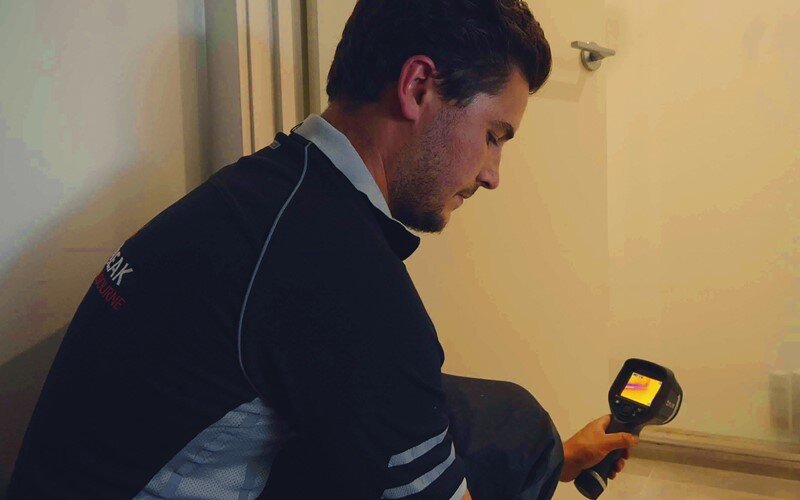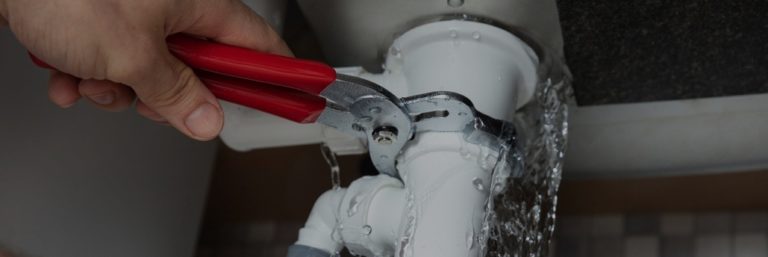Finding Hidden Water Line Leaks: Six Ingenious Hacks
Finding Hidden Water Line Leaks: Six Ingenious Hacks
Blog Article
They are making several great points on the subject of Finding hidden leaks overall in this great article directly below.

Early discovery of dripping water lines can mitigate a prospective catastrophe. In addition to saving you cash, it will certainly lessen the worry as well as frustration. The moment you discover a leak, calling your plumber for fixings is the best service. However, some tiny water leaks may not show up. Below are some hacks that help if you can not identify it with your naked eyes.
1. Check Out the Water Meter
Every house has a water meter. Checking it is a guaranteed manner in which assists you uncover leakages. For beginners, switch off all the water sources. Make certain no one will certainly purge, make use of the faucet, shower, run the cleaning machine or dishwashing machine. From there, most likely to the meter and watch if it will alter. Given that no one is utilizing it, there ought to be no movements. If it moves, that shows a fast-moving leakage. If you spot no modifications, wait an hour or 2 and inspect back again. This indicates you may have a sluggish leakage that could also be below ground.
2. Inspect Water Consumption
If you spot sudden adjustments, despite your consumption being the same, it suggests that you have leakages in your plumbing system. An abrupt spike in your costs suggests a fast-moving leakage.
At the same time, a constant increase monthly, despite the very same practices, reveals you have a sluggish leakage that's also slowly intensifying. Call a plumber to extensively check your residential or commercial property, especially if you feel a cozy location on your flooring with piping below.
3. Do a Food Coloring Examination
When it comes to water intake, 30% comes from toilets. If the shade in some way infiltrates your bowl during that time without flushing, there's a leak between the container as well as bowl.
4. Asses Exterior Lines
Do not neglect to examine your outside water lines as well. Test spigots by affixing a yard hose. Must water leak out of the connection, you have a loosened rubber gasket. Replace this and make certain all links are tight. It will assist get it expertly analyzed as well as preserved each year if you've got a sprinkler system. One small leak can squander tons of water and also increase your water expense.
5. Examine and also Analyze the Circumstance
Property owners should make it a behavior to inspect under the sink counters and also even inside cupboards for any kind of bad odor or mold development. These two red flags suggest a leakage so punctual focus is required. Doing routine assessments, also bi-annually, can conserve you from a significant trouble.
If you understand your house is already old, keep a careful eye on your heating systems, hoses, pipelines and so on. Check for discolorations and also compromising as many pipes and also devices have a life expectancy. They will certainly likewise naturally deteriorate as a result of tear and use. Do not wait for it to intensify if you believe leaking water lines in your plumbing system. Call an expert plumber as soon as possible so you do not end up with a horrible mess in your home.
Early discovery of leaking water lines can reduce a prospective catastrophe. Some little water leakages might not be visible. Inspecting it is a guaranteed means that aids you find leakages. One little leakage can throw away tons of water and increase your water costs.
If you presume dripping water lines in your plumbing system, do not wait for it to intensify.
WARNING SIGNS OF WATER LEAKAGE BEHIND THE WALL
PERSISTENT MUSTY ODORS
As water slowly drips from a leaky pipe inside the wall, flooring and sheetrock stay damp and develop an odor similar to wet cardboard. It generates a musty smell that can help you find hidden leaks.
MOLD IN UNUSUAL AREAS
Mold usually grows in wet areas like kitchens, baths and laundry rooms. If you spot the stuff on walls or baseboards in other rooms of the house, it’s a good indicator of undetected water leaks.
STAINS THAT GROW
When mold thrives around a leaky pipe, it sometimes takes hold on the inside surface of the affected wall. A growing stain on otherwise clean sheetrock is often your sign of a hidden plumbing problem.
PEELING OR BUBBLING WALLPAPER / PAINT
This clue is easy to miss in rooms that don’t get much use. When you see wallpaper separating along seams or paint bubbling or flaking off the wall, blame sheetrock that stays wet because of an undetected leak.
BUCKLED CEILINGS AND STAINED FLOORS
If ceilings or floors in bathrooms, kitchens or laundry areas develop structural problems, don’t rule out constant damp inside the walls. Wet sheetrock can affect adjacent framing, flooring and ceilings.
https://www.servicemasterbyzaba.com/blog/how-to-detect-water-leakage-in-walls/

I have been very intrigued by Finding hidden leaks and I'm hoping you enjoyed reading our entry. Do you know about another individual who is interested in the topic? Be sure share it. Bless you for your time. Come back soon.
24/7 service for plumbing emergencies. Report this page